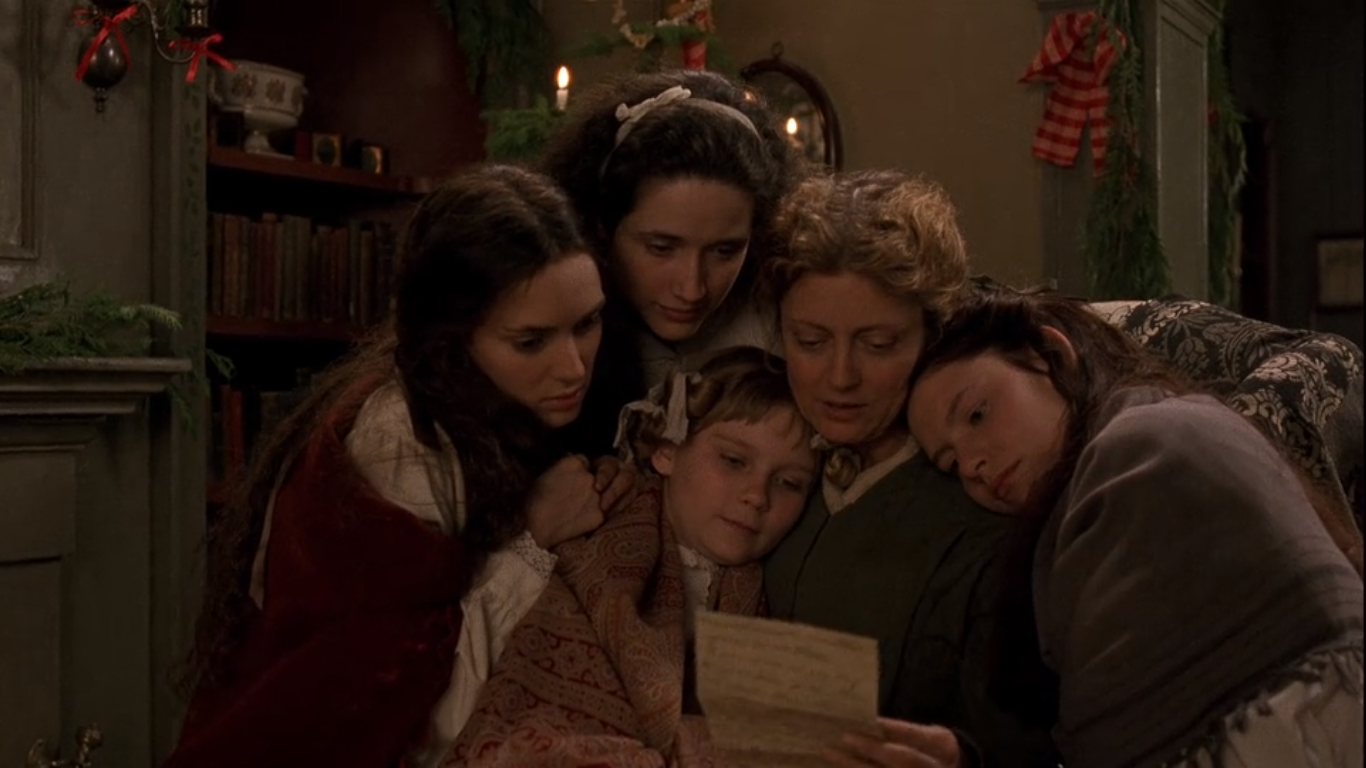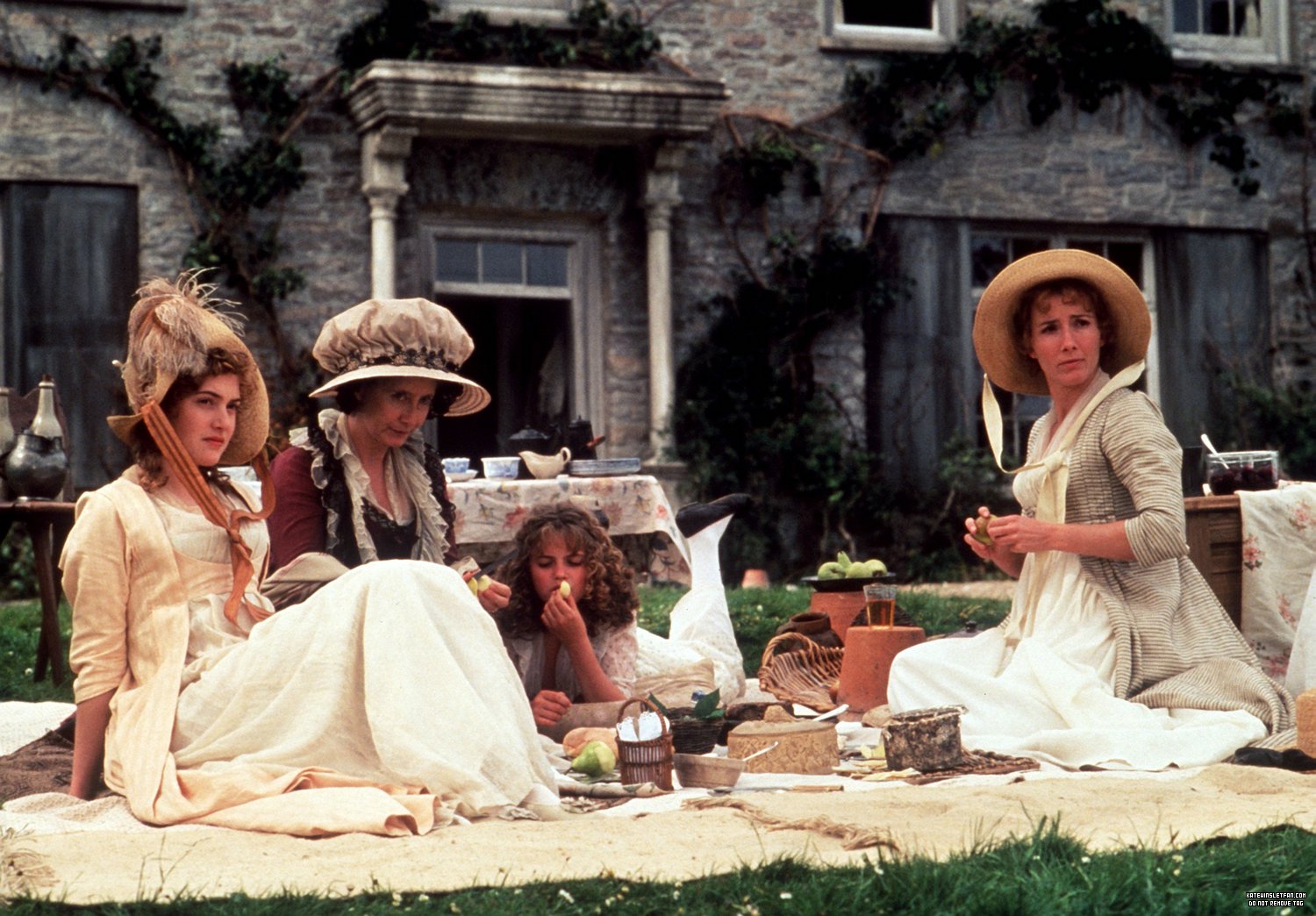Turner Classic recently showed Gillian Armstrong’s 1994 rendition of Little Women. I saw this movie for the first time in middle school, and it immediately became a favorite. I’ve watched it many times since, but not for several years. I always wonder when re-examining a movie I loved as a kid if it will stand up to my initial impression. This one absolutely did. No other film version of Alcott’s masterpiece comes close. (Greta Gerwig’s remake comes out on Christmas Day; she has her work cut out for her.)

As I re-watched the film and fell in love with it all over again, it occurred to me that the mid-90s was something of a renaissance for movie adaptations of literature, specifically 19th century women’s literature. Jane Austen, in particular, had a major resurgence, beginning with the now iconic and, as far as I’m concerned, Gold Standard BBC film adaptation of Pride and Prejudice in 1995 (seriously, everybody else go home, don’t even try, goodnight).
Among the many book adaptations on the big and small screen in the 90s were three of my all-time favorite movies: Little Women (Armstrong, 1994), Pride and Prejudice (Langton, 1995), and Sense and Sensibility (Lee, 1995). Each of these three productions gave a fresh and modern take to books that other versions had not achieved, and they’ve stood up to time beautifully.
One of the reasons I think I love these films so much is that their earlier incarnations were, for me, so resoundingly disappointing. Previous versions include George Cukor’s Little Women from 1933, with Katharine Hepburn (obviously) playing the protagonist Jo March. In 1940, Robert Leonard directed Greer Garson and Laurence Olivier as the leads in Pride and Prejudice. And Sense and Sensibility was produced for television in 1971 and 1981, neither of which I’ve seen in entirety, but both of which appear to be quite dated (the 1981 version is available on Amazon Prime).
I’ve tried to figure out why so many book-to-screen (and sometimes stage-to-screen) productions of Hollywood’s so-called “Golden Age” left me wanting. Best I can figure, the standards and codes of the time did not allow for the nuances of the characters to come through, even when performed by top-notch talent. There was a certain formula in moviemaking, even before the Hays Code was officially instituted, that was restrictive, and had a tendency to strip away some of the layers that great writing can offer. A good amount of the humor (especially the somewhat risqué humor) gets flattened or omitted, and the films ended up coming off as period piece fluff more than solid movie companions to classic works of literature.
While I don’t particularly love the early film productions of these novels, I don’t want to impugn their value entirely — the casts are often brilliant and technical productions are excellent. But they were undeniably due for a cinematic update. Enter Armstrong, Thompson, Lee, and Langton (thanks, guys!).
I’m not sure what made the mid-90s so ripe for a women’s lit renaissance (aside from the timelessness and quality of the books in question). But modern interpretations of these works were clearly in demand, whether audiences knew it or not. Little Women and Sense and Sensibility were both commercial and critical successes, and the BBC mini-series Pride and Prejudice kicked off a wave of cult fandom that remains active today (*raises hand*).

The P&P phenomenon is particularly far-reaching in that it turned a lot of non-Austen-readers into Austen fanatics, and I fully believe it achieved this by being one of the first cinematic takes on her books that truly grasped how funny she was. Austen’s wit and social insights are some of the greatest gifts her books offer, and too many movie adaptations of her work have stifled those parts of her writing, leaning instead toward stiff and restrictive portrayals of her era, where manners and customs were apparently of such importance that all shades of actual humanity, especially humor, were blotted out.
Emma Thompson’s Oscar-winning screenplay for S&S is equally brilliant in its handling of Austen’s comedy. Thompson perfectly wove together the humor and heartbreak around which the novel’s story revolves, and Ang Lee’s direction was a thing of beauty, especially his use of the British landscape and the many colorful secondary characters that populate the Austenian universe (Hugh Laurie and Imelda Staunton both give minor but hilarious turns).

Little Women almost didn’t happen — or at least, we almost didn’t get the treasure we now have. Gillian Armstrong turned down directing the film multiple times before finally accepting. And thank God she did. Her film is heartfelt without ever becoming saccharine, and it’s a period piece that, unlike many of its predecessors, keeps the characters and story firmly in the foreground, so the costumes and setting (while perfect) don’t become the entire show. It’s beautifully acted and has a gorgeous score (part of which is played in a gut-wrenching soft piano in one of the most heartbreaking parts of the film … beware).
The more modern interpretations of these works are also undoubtedly better than their ancestors because of the greater involvement of women behind the scenes and generally more contemporary attitudes toward the subject matter (i.e. the struggles of lower-income women in the 19th century). By no means were these aspects of the books untouched in the earlier versions, but there was obviously more latitude in the 90s to show and expand upon the text and subtext of the original novels, allowing for deeper, more nuanced, and more compelling films.
Marmee, for example, played by Susan Sarandon, gives many an overtly feminist lecture about girls being allowed childhood frivolity, the importance of educating girls same as boys, and the need for women to be allowed to enjoy themselves without rumors and scandals erupting from it. Emma Thompson made sure to emphasize the point that the Dashwood women were in a very tight spot with regard to their lives and livelihoods specifically because of the attitude regarding women either inheriting or earning money at the time (read: they couldn’t do either). And Lizzie Bennet’s determination not to marry for convenience (and the controversiality of that decision) stresses the point that women’s options were limited to a dangerous point.
The contemporary versions of these movies, and their popularity, proved the original material’s stay power — the stories are still appealing, yes. But even more evident is that their themes are still relevant. We still notice and care about the ways in which class shapes our views of and opportunities in the world; the ways in which women’s choices are often restricted, and the consequences that brings; and, of course, the ways that romance — especially romance that strives for equality — moves and changes people. The love for these stories in the modern age is a testament to the foresight and insight of the women who wrote them.
I’d like at some point to go more in-depth with regard to the way these films have been adapted, but for now, I just want to appreciate them and encourage others to watch them. Little Women is currently streaming on Netflix, Pride and Prejudice is available on Amazon Prime, and Sense and Sensibility is available for rent or purchase on Prime, Vudu, and YouTube (hopefully it will be added to a streaming network soon). If you’re a fan of the literary classics or think you might be, do yourself a favor and give them a chance.
